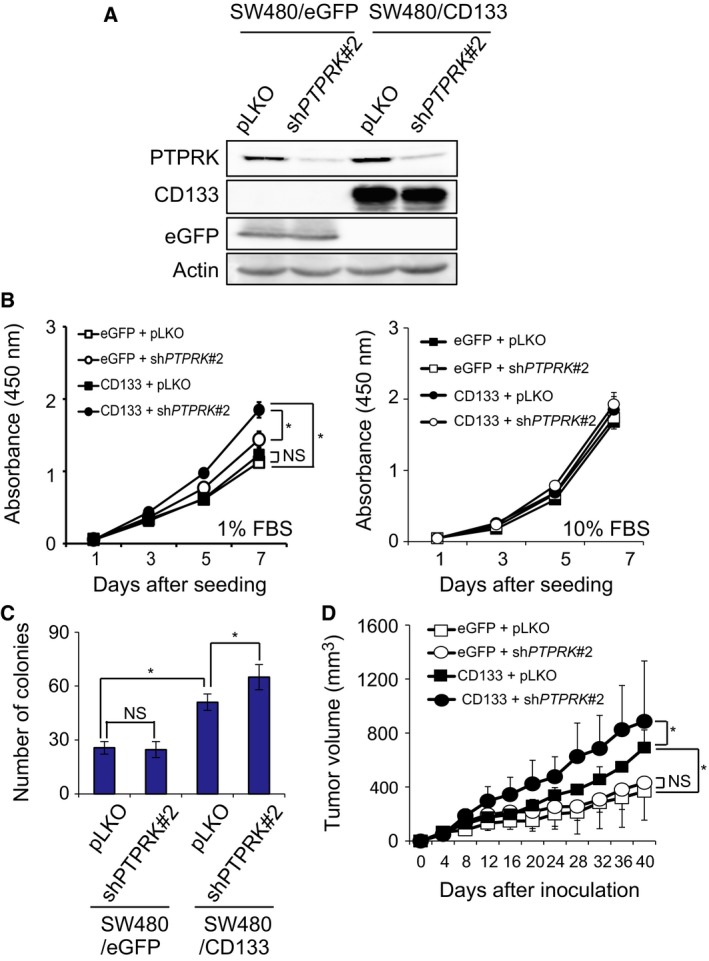Figure 2.

PTPRK gene silencing enhances pro‐oncogenic activity of CD133. (A) Forced expression of CD133 and silencing of PTPRK. CD133‐negative colon cancer SW480 cells were transduced with the lentiviral vector for CD133 or eGFP together with the shPTPRK#2 or pLKO. Cell lysates were prepared from the indicated cells and analyzed for CD133, eGFP and PTPRK by western blotting. Actin was used as a loading control. (B) Aforementioned SW480 derivatives were seeded into 96‐well plates (500 cells per well) and cultured with 1% FBS (left panel) or with 10% FBS (right panel) containing culture medium. Their proliferation rates were examined by WST assay at the indicated time points. Data show mean ± SD (n = 3) and the asterisk indicates the statistical significance of difference (P < 0.05, repeated‐measure two‐way ANOVA). NS, not significant. (C) Anchorage‐independent proliferation. The indicated cells (500 cells per dish) were grown in soft agar medium for 2 weeks, and then the number of colonies (larger than 100 μm) was scored. Data show mean ± SD (n = 3) and the asterisk indicates the statistical significance of difference (P < 0.05, one‐way ANOVA). NS, not significant. (D) Xenograft tumor growth. The indicated cells (5 × 106 cells) were subcutaneously inoculated into the flanks of BALB/c nude mice. Tumor volumes were measured at the indicated time periods after the inoculation. SW480/eGFP plus pLKO (open squares); SW480/eGFP plus shPTPRK #2 (closed squares); SW480/CD133 plus pLKO (open circles); SW480/CD133 plus shPTPRK #2 (closed circles). Data show mean ± SD (n = 3) and the asterisk indicates the statistical significance of difference (P < 0.05, one‐way ANOVA). NS, not significant.
